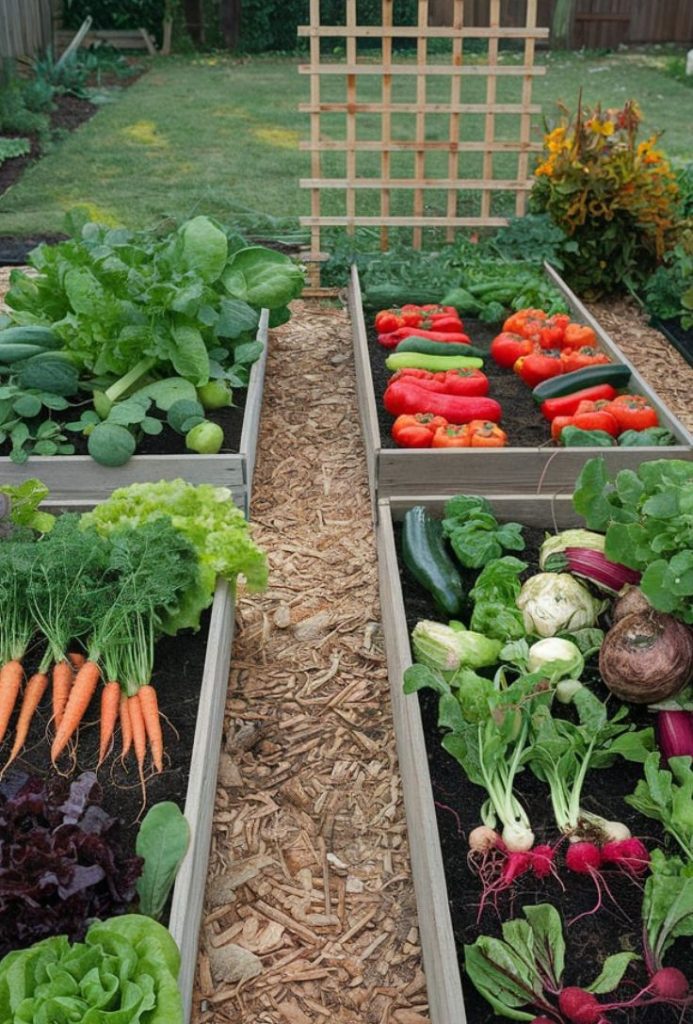For many people, the dream of a backyard garden is often overshadowed by the reality of a busy schedule. The idea of tending to a garden every day can feel like another chore in an already packed routine. But gardening doesn’t have to be a major time commitment. By adopting a few smart strategies and choosing the right plants, you can create a low-maintenance, high-reward garden that fits perfectly into a busy lifestyle.
Here’s a guide to how to create a food garden at home that works for you, not the other way around.
Strategy 1: Smart Planning, Minimal Effort
The most important work you’ll do for your low-maintenance garden happens before you even plant.
- Start Small: Forget about a massive, sprawling vegetable patch. A few containers on a sunny balcony or a single 4×8-foot raised bed is the perfect size for a busy beginner. It’s much easier to spend 15 minutes a week on a small garden than 15 minutes a day on a large one.
- Location is Key: Place your garden in the sunniest spot possible, as this will prevent plants from becoming weak and “leggy.” More importantly, locate it close to a water source. Having your garden right next to the tap saves you from hauling a hose or a watering can across the yard, making the watering chore faster and more likely to get done.
- Choose the Right Plants: Not all plants are created equal in terms of time commitment. The key is to select resilient, productive, and self-sufficient plants that don’t need constant fussing.
Strategy 2: The Right Setup, Automated Maintenance
Once you have a plan, the right setup will automate some of the most time-consuming tasks.
- Embrace Raised Beds: Raised beds are the busy person’s best friend. They prevent weeds from infiltrating from the surrounding ground, and the soil within them warms faster in the spring, extending your growing season.
- Invest in Automatic Watering: This is the single biggest time-saver you can make. A simple drip irrigation system or a soaker hose connected to a timer will water your plants deeply and consistently, even when you’re not home. It’s a small investment that pays off immensely in time saved and healthier plants.
- Mulch, Mulch, Mulch: A thick, 2-3 inch layer of mulch (like straw, wood chips, or shredded leaves) around your plants is a miracle worker. It suppresses weeds, retains soil moisture, and regulates soil temperature. This means less time weeding and less time watering—two of the biggest time sinks in gardening.
Strategy 3: The Best Plants for a Busy Lifestyle
For a low-maintenance garden, choose plants that are known for their hardiness and high yield.
- Zucchini and Summer Squash: These plants are incredibly productive and require very little hands-on care. Give them plenty of sun and space, and they will reward you with an abundance of squash.
- Cherry Tomatoes: More forgiving than their larger counterparts, cherry tomatoes are hardy and prolific. You can grow them in a large container with a tomato cage, and they will happily produce a continuous supply of sweet fruit.
- Green Beans: A “plant and forget” type of vegetable. Both bush and pole beans are easy to grow and will produce a large harvest with minimal intervention.
- Herbs: Many herbs like rosemary, thyme, and oregano are drought-tolerant and thrive on neglect. You can plant them in a pot right outside your kitchen door for easy access.
- Garlic: The ultimate low-maintenance crop. Plant individual cloves in the fall, and they will grow over the winter, ready for a harvest the following summer.
Gardening on a busy schedule is not a compromise; it’s a strategic choice. By starting small, setting up a low-maintenance system, and choosing the right plants, you can still enjoy the immense satisfaction of growing your own food without adding stress to your life. The goal is a garden that gives you joy, not another item on your to-do list.


